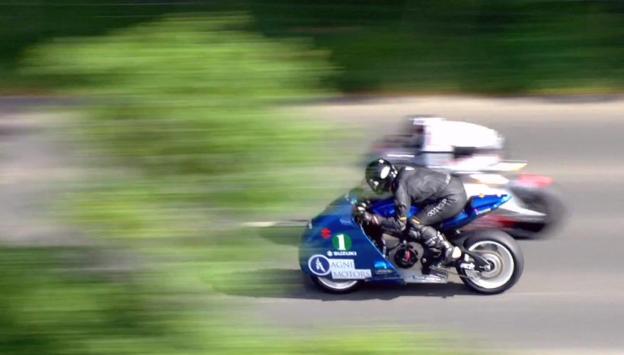
We here at Digital Trends are big fans of both motorcycles and electric vehicles. Combining the two – for us – is essentially the pinnacle. Luckily for us, there’s a vibrant – albeit quiet – world of electric motorcycle racing. Delightfully, someone has made a documentary about the all-electric Isle of Man TT motorcycle race, which takes place at about the same time as the often terrifying gas-powered TT.
Called “Charge,” the film begins in 2009 following several teams through the first year of the inaugural all-electric race. Narrated by Obi Wan Kenobi, er, Ewan McGregor of Long Way ‘Round fame, the film rides along with the teams not only during the race but also in their pursuit of building the fastest electric motorcycles that they possibly can.
While the race has won over many skeptics, it still has its detractors: “This is the TT. It’s recognized throughout the world. They come to see ad men race ad motorbikes, not piss about on battery-powered scrap,” as one Brit spectator says in the film’s trailer.
The Isle of Man TT race, at least the gas-powered version of it, is not for the timid and takes place on city streets and country highways on said island every year. On modern gas-powered bikes, speeds can hit 170mph or better. With little to protect riders from the numerous stone walls and other solid objects they may encounter in a crash, it is one of the deadliest motorcycle races in the world and has a fairly bloody history to match.
In 2012, several electric bikes managed to top an average speed of 100mph for the first time in history, although top speeds out on open stretches of the course were much higher at times.
“Charge” hits theaters on May 20th with a limited engagement. In fact it’s only being shown in a handful of states: Arizona, California, Connecticut, Montana, New York, Ohio, Pennsylvania, Texas, and Virginia.
Even though one of the key bikes in the film is from here in Stumptown, the movie is not being shown in our hometown of Portland, Oregon. Still, we’re quite jazzed by the film.
Beyond allowing us to geek-out on electric motorcycles, this film promotes electric drivetrains as not only clean and quiet but also powerful and reliable – all of which is extremely important if electrically powered vehicles stand a chance in the global marketplace.
Check out the Charge trailer here:
Editors' Recommendations
- Why charging speed is as important as range for owners of electric cars
- Inside the light-speed race to build a solar-powered commuter car
- Nissan teams up with EVgo to provide free charging of Leaf vehicles in U.S.
- New battery design could mean EVs charge in only 10 minutes
- 120 years later, fully electric black cabs are back in London


